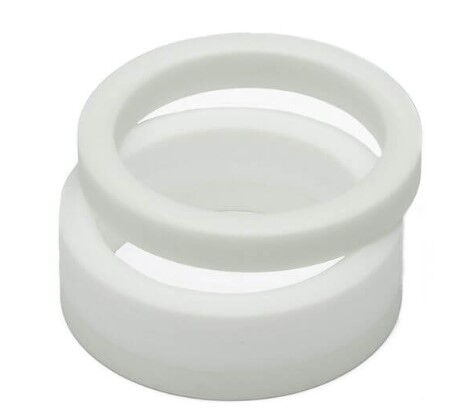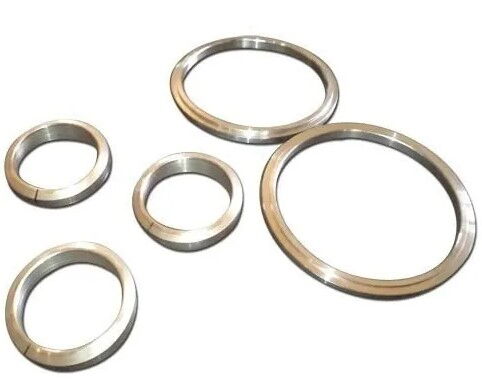In the industrial realm, valves are indispensable devices that play a crucial role in pipeline systems. Among the various types of valves, ball valves are widely used in complex working conditions due to their unique structure and excellent performance. Whether in the chemical, mechanical, or other industries, the sealing performance of ball valves is a key factor that affects their service life and reliability. Today, let's delve into the two main sealing methods of ball valves: soft seal and hard seal.
Before we dive into the details of ball valve sealing, let's first clarify the basic concepts of soft seal and hard seal.
Soft seal refers to the use of non-metallic materials as sealing elements embedded in the valve seat. These non-metallic materials, such as rubber (nitrile rubber, ethylene propylene rubber, etc.) and plastics (polytetrafluoroethylene, nylon, etc.), typically possess a certain degree of elasticity. The advantage of this sealing method is its excellent sealing performance, which can even achieve zero leakage, and this effect can be repeatedly realized. However, soft seal has its limitations; it is not heat-resistant and is prone to aging and deformation in high-temperature environments, leading to leakage. Additionally, soft seal materials are susceptible to pressure effects in high-pressure environments, making them generally suitable for medium and low-pressure conditions.

Hard seal, on the other hand, involves metal-to-metal sealing. Both the sealing ball and the valve seat are made of metallic materials, such as stainless steel, copper, chromium stainless steel, Stellite alloy, and nickel-based alloy. The advantages of hard seal include high-temperature resistance, wear resistance, and good mechanical properties, making it suitable for high-pressure and high-temperature environments. However, the sealing performance of hard seal is relatively inferior to that of soft seal. Although some manufacturers claim zero leakage, the actual sealing effect of hard seal usually depends on the machining accuracy and process level.

After understanding the basic concepts of soft and hard seal, let's further explore the structure and manufacturing processes of soft seal and hard seal ball valves.
The structure of a ball valve mainly includes components such as the valve body, valve ball, valve stem, valve seat, sealing ring, and piston. For soft seal ball valves, the valve seat is embedded with non-metallic sealing materials. The elasticity of these materials allows the valve seat to better match the valve ball, thereby achieving sealing. In contrast, the valve seat of a hard seal ball valve is precision-machined from metallic materials, and the sealing between the valve ball and the valve seat relies on the tight fit between metal and metal.
In terms of manufacturing processes, the machining of soft seal ball valves is relatively simple. Due to the elasticity of the soft seal materials, the machining accuracy requirements for the valve seat are relatively low. Even if there are some minor irregularities on the valve seat surface, the soft seal material can fill these defects through its own elastic deformation, thereby achieving a good sealing effect. The manufacturing of hard seal ball valves, however, is much more complex. Since metal-to-metal sealing requires extremely high matching accuracy, the machining of the valve seat and valve ball needs to go through multiple processes such as precision grinding and hardening treatment. These processes not only require high-precision machining equipment but also strict quality control to ensure that the sealing performance meets the design requirements.
After clarifying the structure and manufacturing processes of soft and hard seal ball valves, let's further compare their performance characteristics.
The sealing performance of soft seal ball valves is usually very good and can achieve zero leakage. This is because non-metallic sealing materials have good elasticity and flexibility, which allows them to closely fit the surface of the valve ball and maintain good sealing even in the presence of minor defects. However, the sealing performance of hard seal ball valves is relatively lower. Although metal-to-metal sealing can theoretically achieve zero leakage, in practical applications, the sealing effect of hard seal ball valves is often not as good as that of soft seal ball valves due to limitations in machining accuracy and process level. Nevertheless, with the advancement of technology, some advanced hard seal ball valves have significantly improved their sealing performance by adopting special sealing structures and materials.
There is a significant difference in temperature resistance between soft seal and hard seal ball valves. Soft seal materials are generally not heat-resistant and are only suitable for use in ambient temperature environments. When the temperature rises, soft seal materials are prone to aging and deformation, leading to a decrease in sealing performance or even leakage. In contrast, hard seal ball valves have good temperature resistance and can be used in a variety of environments, including low, ambient, and high temperatures. Generally, when the temperature exceeds 250°C, it is recommended to choose hard seal ball valves.
In terms of pressure resistance, hard seal ball valves are significantly better than soft seal ball valves. Due to their metal-to-metal sealing structure, hard seal ball valves can withstand higher pressures and are usually suitable for high-pressure conditions above 2.5MPa. Soft seal ball valves, on the other hand, are limited by non-metallic sealing materials and are generally only used in medium and low-pressure environments. In high-pressure environments, soft seal materials are easily deformed by pressure, leading to a decrease in sealing performance.
Wear resistance is also an important indicator for evaluating the performance of ball valves. Hard seal ball valves, with their metal-to-metal sealing structure, have good wear resistance and can effectively resist the wear of the medium. Soft seal ball valves, however, are relatively weaker. Non-metallic sealing materials are prone to wear during long-term use, leading to a decrease in sealing performance. However, some new types of soft seal materials have improved their wear resistance to a certain extent by adopting special formulas and processes.
In terms of service life, hard seal ball valves generally have a longer lifespan than soft seal ball valves. The metal sealing structure of hard seal ball valves has good wear and corrosion resistance, allowing them to operate stably over the long term in harsh conditions. Soft seal ball valves, due to the limitations of non-metallic sealing materials, have a relatively shorter service life. In harsh environments such as high temperature, high pressure, and strong corrosion, soft seal materials are prone to aging and wear, leading to a decrease in valve sealing performance or even failure.
By comprehensively comparing the performance of soft and hard seal ball valves, we can better understand their respective advantages and limitations. Next, let's explore the specific application scenarios of these two types of ball valves in practical industrial applications.
Due to their excellent sealing performance and lower manufacturing costs, soft seal ball valves are widely used in situations where high sealing performance is required but the working conditions are relatively mild. For example, in pipelines for conveying non-corrosive media such as air and water, soft seal ball valves can meet the usage requirements very well. In addition, soft seal ball valves are also commonly used in medium and low-pressure pipeline systems, such as urban water supply systems and HVAC systems. In these scenarios, the zero-leakage performance of soft seal ball valves can effectively prevent media leakage and ensure the normal operation of the system.
Hard seal ball valves are more suitable for harsh working conditions such as high temperature, high pressure, and strong corrosion. For example, in chemical industry pipelines for conveying acids and alkalis, oil pipelines in the petroleum industry, and high-temperature steam pipelines in the heating industry, the high-temperature resistance, wear resistance, and corrosion resistance of hard seal ball valves can ensure that the valves maintain good sealing performance and reliability over the long term. In addition, hard seal ball valves can also be used in special situations with high sealing requirements, such as the nuclear industry and aerospace fields.
After understanding the performance and application scenarios of soft and hard seal ball valves, it is important to grasp how to select the appropriate ball valve based on actual needs.
When selecting a ball valve, the nature of the process media should be considered first. If the media contains solid particles, is abrasive, or has a temperature higher than 200°C, it is recommended to choose a hard seal ball valve. The metal sealing structure of hard seal ball valves can effectively resist media wear and high-temperature erosion, ensuring the sealing performance and service life of the valve. For non-corrosive, medium and low-pressure, and ambient temperature media such as air and water, soft seal ball valves are a better choice.
Temperature and pressure are also important factors in selecting ball valves. Generally, when the temperature exceeds 250°C, hard seal ball valves should be prioritized. Soft seal materials are prone to aging and deformation in high-temperature environments, leading to a decrease in sealing performance. In high-pressure conditions, hard seal ball valves also have an advantage. They can withstand higher pressures and are usually suitable for high-pressure environments above 2.5MPa. Soft seal ball valves, limited by non-metallic sealing materials, are generally only used in medium and low-pressure environments.
The size of the valve and the opening torque are also factors to consider when selecting a ball valve. For larger-sized valves with a significant pressure difference, the torque required to open the valve should be considered. When the torque is large, a fixed hard seal ball valve should be chosen. The structure of a fixed hard seal ball valve is more stable, allowing it to withstand larger torques and ensure the normal opening and closing of the valve.
Both soft and hard seal ball valves can achieve a sealing grade of 6. In practical applications, the appropriate sealing grade can be selected based on specific usage requirements. If extremely high sealing performance is required, a ball valve with a higher sealing grade can be chosen; if the sealing performance requirement is relatively low, a ball valve with a lower sealing grade can be selected to reduce equipment costs.
Soft and hard seal ball valves each have their own advantages and disadvantages and are suitable for different working conditions and usage requirements. Soft seal ball valves have excellent sealing performance and lower manufacturing costs but are not resistant to high temperature, high pressure, and strong corrosion. Hard seal ball valves, on the other hand, have good high-temperature resistance, wear resistance, and corrosion resistance but have relatively poor sealing performance, complex manufacturing processes, and higher costs. In practical applications, the appropriate ball valve sealing method should be selected based on a comprehensive consideration of factors such as process media, temperature, pressure, valve size, and torque.
In summary, understanding the differences and characteristics of soft and hard seal ball valves is crucial for the correct selection and use of ball valves. It is hoped that the introduction in this article will help you better understand these two sealing methods and make wise choices in your actual work.
